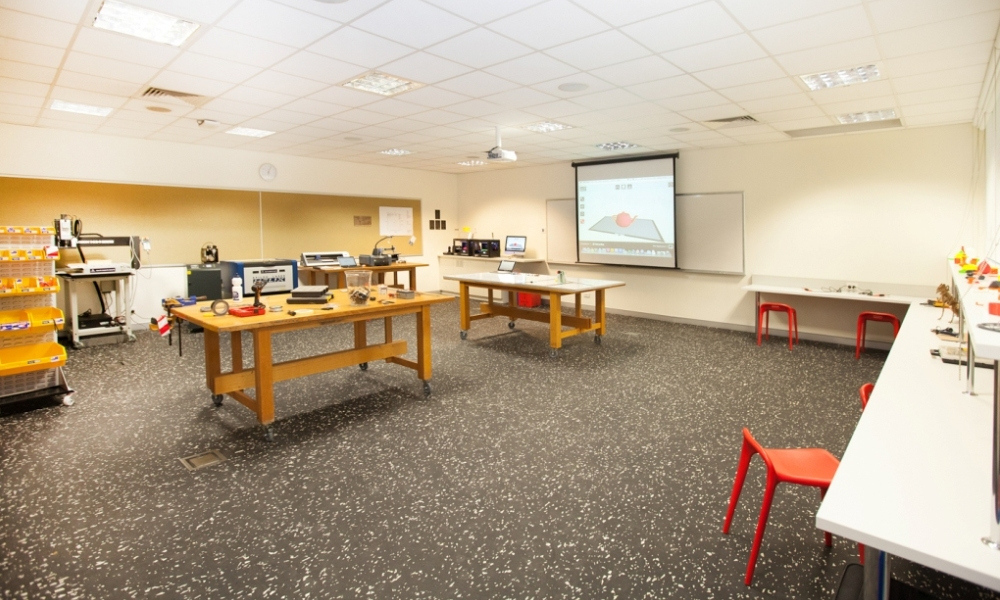How can we engage girls in Science, Technology, Engineering and Maths?
It is a hot topic of discussion amongst academics and educators alike at the moment, with The Australian Council of Learned Academies recommending that ‘Australia needs to grow its pool in the area of Science, Technology, Engineering and Mathematics (STEM), and expanding this talent pool requires increasing the proportion of young women as well as low socioeconomic students, resources that are at the moment underutilised' (Marginson, Tytler, Freeman & Roberts, 2013, as cited in Thompson, 2015).
But there is one Victorian school that is tackling the issue full steam ahead with the introduction of a fabrication lab that can be used across all disciplines.
Lauriston Girls' School's FabLab has been set up to reinvent the classroom for the digital age. For 18 months, students in all year levels have been learning how to use tools such as 3D printers and laser cutters in order to fashion new inventions and solve problems.
Principal Susan Just discovered the FabLab concept for the first time at the Stanford University Graduate School of Education, in the US. She then started work at Catilleja Girls' School in Palo Alto, California - the first school to have a FabLab.
'[Then I was fortunate in] 2013 to actually go and visit Paulo Blikstein [Assistant Professor of Education and, by courtesy, of Computer Science] at Stanford and spent time looking at the FabLab … and really felt that this was something that we could establish very successfully here at Lauriston.
‘[I felt] it would cover a number of my goals, which essentially were to focus on STEM, to engage girls in STEM, and to look at some really exciting creative ideas where they could integrate design thinking with using equipment; and making it a very cross-disciplinary approach so every subject could go in from Prep right through to Year 12.'
Still, Just prefers to say that they utilise a STEAM approach, rather than a STEM approach at the Victorian school.
‘We think that STEAM is a much more accessible term for what we are endeavouring to do,' the educator tells Teacher. ‘It's not one that's well-used at the moment, and it has a couple of different morphs, it can be ‘the arts' and it can be ‘and anything'. We particularly want to involve our students in understanding that technology and fabrication equipment can be used in any subject, including the arts.
‘What we're trying to do is look at how Science, Technology, Engineering, Maths, the Arts, can blend together across disciplines. … If you're a student who's studying Art, or Drama, or Media, or Visual Communication, you are in fact using many disciplines. … You're using your knowledge of Technology, you're using your knowledge of Maths, you're using your knowledge of Science, and you're using your knowledge of the Arts. And so STEAM incorporates all of that.'
Just explains that the FabLab allows students to understand the practical application of subjects.
‘Our [Preps] this year … are learning about pyramids. And so we started using iDraw on the Apple iPads to start drawing pyramids - which were not very familiar [to] the girls. Those drawings were moved over to the laser cutter, and the laser cutter cut out their pyramids for them. Then the girls started putting the pyramids together and started seeing where things were going wrong, which is exactly what we wanted them to do.
‘They're actually looking at this thing from a two-dimensional perspective, and they're actually seeing that things aren't right. So now they're going back and they're looking at their design process again and they're re-thinking “How can I make this pyramid come together?” So [a] very simple … inquiry unit was taken to another level, because we were actually able to include the fabrication lab.
‘Go to Year 11 Psychology … girls wanted to actually build an eye to see all the parts of the eye and how we actually view the world. And so they used the fabrication lab to actually build their own eyes,' explains Just.
‘You then take that to Year 12 Art. The girls [studying the International Baccalaureate and the Victorian Certificate of Education] are doing their portfolios for their final pieces of work, and they're looking at how their particular art pieces can be enhanced through using the equipment in the fabrication lab. So, we've actually had girls who have integrated things they have done on the laser cutter or the lino cutter into their pieces of art. Then we start to see cross-disciplinary approaches.'
The principal says that while there aren't any measurable results at this stage, a number of classes from different faculties are seeing the benefits of using the fabrication lab in their unit of work. ‘The next measurement will be actually looking at how we're enhancing girls' understanding of [STEM].'
References
Thomson, Sue. (June 2015). Australian Students in a Digital World. Policy Insights, Issue 3. Melbourne: ACER.
How are you working to increase student engagement in STEM?
Are you using a cross-disciplinary approach?
How do you help students understand the practical application of subjects in your school?



